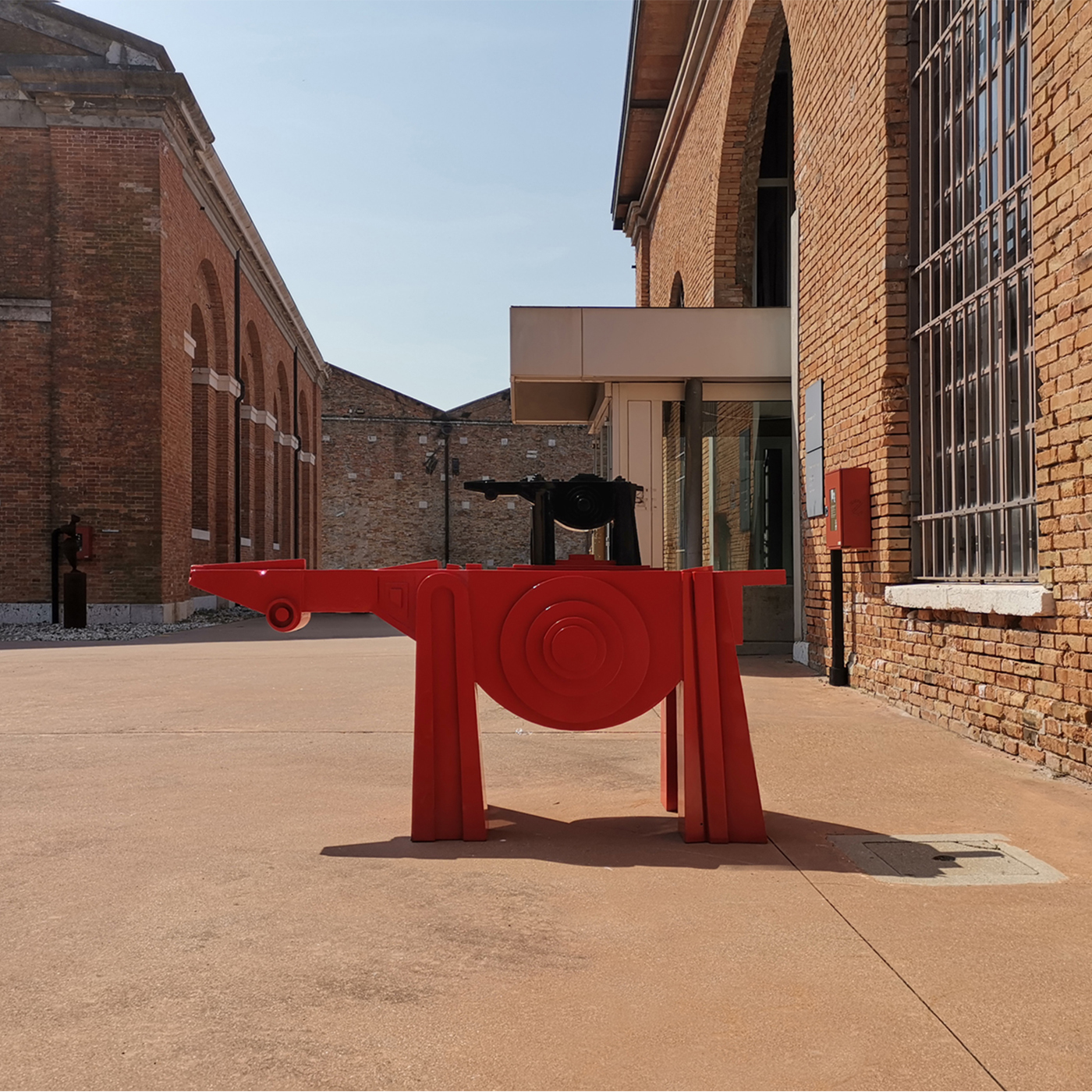International Exhibition
17/04 – 24/11 2019
SPAZIO THETIS
ARSENALE NOVISSIMO VENICE
Every day 10.00 – 18.00
By water bus: lines 4.1-4.2 /5.1-5.2
Stop Bacini
OPENING
17/04
at 17.00
presenting
CAVALLO ROSSO CON PULEDRO NERO
Steel
199x65x120 cm
Venice, 2017
Gianmaria Potenza participates in the international exhibition FRIENDS. His work “Cavallo Rosso con Puledro Nero” (2017), in fire-painted steel, will be exhibited together with the works of Beverly Pepper, Michelangelo Pistoletto and Jan Fabre – already part of the permanent collection of Spazio Thetis – and together with 26 other great national and international artists.
The work will be placed in the vast garden of one of the most fascinating places in Venice, the Northern Arsenal, which, along with the Giardini, is the main centre of the cultural life of the city during the Biennale. The exhibition will be inaugurated Wednesday 17 April from 17.00 and will be open until 24 November 2019.
The collective exhibit, which observes reality from multiple points of view, focuses on works that challenge existing categories of thought, inviting new readings, taking into consideration contradictory and incompatible notions and juggling different ways to interpret the world around us.
Cavallo Rosso con Puledro Nero (Red Horse with Black Foal) is inspired by another subject the artist treated in 2009: La Torre di Cavalli (Tower of Horses). This one is part of the series of bronze sculptures inspired by animals, collected under the name “L’Arca di Potenza” (Potenza’s Ark). The artist with stylized and dry lines represents the horses as if in tension and assembles the Tower placing them one above the other.
In Cavallo Rosso con Puledro Nero, Potenza maintains this vision, taking it to the extreme. As born of a primordial spontaneous gesture, the work almost looks like an ancient cave painting or a nuragic bronze.
The constant presence of elementary geometric signs and the use of segnali red, add further levels of investigation of the work. In the first place, the use of a strong and bright red proves Gianmaria Potenza’s return to colour, bringing his artistic research to more playful and pop results.
Finally, the geometries that make unmistakable the language he uses on the surfaces of his works, here appear to be greatly reduced in number and made more evident, placed on a larger scale. No longer just language, they forcefully enter the formal research of this sculpture.
